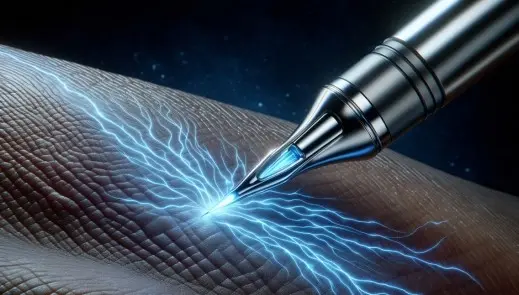
Mastering Skin Perfection: Guide to Hyfrecator Treatments
At Leva Medical, we understand the pursuit of impeccable skin can be a challenging endeavor, often fraught with obstacles such as skin tags and sebaceous gland disorders. However, with the advent of innovative technologies such as the Hyfrecator, we can now offer a cutting-edge electrosurgical solution that has transformed the landscape of skin treatments.
The Hyfrecator stands as a beacon in the vast array of skin treatment modalities, providing a safe, cost-effective, and efficient method to address a variety of skin conditions. This article serves as a comprehensive guide to the Hyfrecator, detailing its applications, the procedure, and expectations regarding recovery, safety, potential risks, and cost-effectiveness.
At Leva Medical, we understand the pursuit of impeccable skin can be a challenging endeavor, often fraught with obstacles such as skin tags and sebaceous gland disorders. However, with the advent of innovative technologies such as the Hyfrecator, we can now offer a cutting-edge electrosurgical solution that has transformed the landscape of skin treatments.
The Hyfrecator stands as a beacon in the vast array of skin treatment modalities, providing a safe, cost-effective, and efficient method to address a variety of skin conditions. This article serves as a comprehensive guide to the Hyfrecator, detailing its applications, the procedure, and expectations regarding recovery, safety, potential risks, and cost-effectiveness.
Key Takeaways
- The Hyfrecator is a low-powered medical device used for the precise treatment of various skin conditions like skin tags, milia, and some skin cancers, using high-frequency electrical pulses without the need for a dispersive electrode pad.
- The Hyfrecator offers various applications including the successful removal of skin tags, treatment of milia, and eradication of sebaceous gland disorders, with procedures typically involving minimal discomfort, reduced risk of scarring, and potential recovery within weeks
- Hyfrecator treatments entail aftercare such as avoiding sun exposure and using physical sunscreens; while generally safe, they carry potential risks like burns and infection, and costs are variable - typically not covered by insurance but can be financed through services like CareCredit® and PatientFi TM.
Understanding the Hyfrecator
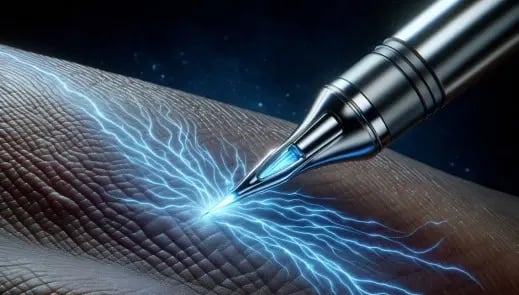
Deriving its name from 'high-frequency eradicator,' the Hyfrecator is a low-powered medical device used in electrosurgery on conscious patients, often in office settings. Its primary function is to directly eliminate tissue and control bleeding during minor surgical procedures, including the treatment of some skin cancers.
Unlike other electrosurgical units, the Hyfrecator operates without requiring a dispersive electrode pad attached to the patient. It emits a very low powered current in the form of low-power, high-frequency electrical pulses directly to the affected area. With two principal modes of operation - fulguration, which intentionally creates a spark to carbonize tissue, and desiccation, which uses electrical energy to heat and eliminate tissues near the probe tip - the Hyfrecator is a versatile tool in the hands of a skilled professional.
The Hyfrecator finds frequent use in various skin treatments by dermatologists. The device's user-friendly design includes:
-
A hand-switching pencil with power adjustment buttons.
-
Sterile sheaths, ensuring its appropriateness for hygienic treatments.
-
Three customizable output power settings, allowing healthcare providers to adjust the intensity of the electrosurgical pulse according to the specific treatment requirements.
Hyfrecator Applications
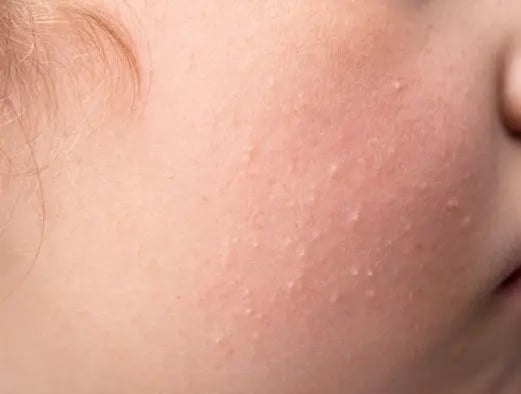
The Hyfrecator is a versatile device capable of addressing a diverse range of skin indications. It can successfully remove:
-
Skin tags
-
Milia
-
Cherry angiomas
-
Other red spots or patches present on the skin
The Hyfrecator affects the tissue immediately for precise and effective treatment.
In dermatological procedures, the Hyfrecator brings benefits such as eliminating warts, desiccating sebaceous gland disorders, and destroying small superficial veins that are cosmetically unwanted. This is achieved using high voltage and high frequency to overcome high impedance, effectively cutting tissue.
Skin Tag Removal
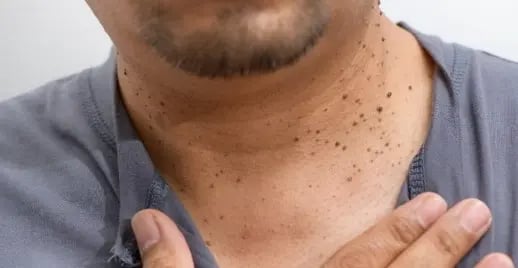
Skin tags are benign growths that occur due to skin friction. They are often found in individuals who are overweight, pregnant, or have lax skin due to increased physical contact between skin folds. Hormonal imbalances and genetic predispositions may also contribute to their formation.
As an effective solution, the Hyfrecator is used for skin tag removal. It works by evaporating damaged tissues, resulting in an even texture and promoting natural healing. The device has a high success rate, with a 90% chance of removing lesions up to 1 mm in base, and a 76% success rate for lesions up to 2 mm. This is achieved by creating a spark contact point with the skin, allowing for precise treatment.
Demonstrating its effectiveness, the Hyfrecator is widely accepted and deemed reliable within the dermatological community for skin tag removal.
Milia Treatment
Effective in treating Milia - tiny, white bumps that appear when keratin, a protein, becomes trapped under the skin, the Hyfrecator is a reliable choice. The Hyfrecator's high-frequency electrical current accurately targets the milia, resulting in their efficient removal while causing minimal discomfort to the patient. The device operates at very high temperatures, ensuring effective treatment without the risk of scarring.
In the milia removal process, the Hyfrecator administers a high-frequency electrical current directly to the milia, disintegrating them for extraction. After the procedure, it is important to:
-
Maintain cleanliness of the area
-
Prevent irritation to the treated skin
-
Avoid touching or picking at the treated area
-
Use gentle cleansers and moisturizers recommended by your dermatologist
-
Protect the area from sun exposure by wearing sunscreen or a hat
In some cases, a regional nerve block may be used to minimize discomfort during the treatment.
Typically, complete results from Milia treatment using a Hyfrecator are observed within approximately two weeks, ensuring a swift and effective recovery period. The device's design ensures a low resistance ground, minimizing the risk of complications during treatment.
Sebaceous Gland Disorders
Seborrheic keratosis is another prevalent benign skin growth, often appearing as skin lesions, commonly observed in middle age and may become more prevalent as individuals age. During the Hyfrecator treatment, it is important to avoid metal table leading to ensure patient safety and comfort.
Using a Hyfrecator poses minimal risks while ensuring effective removal of sebaceous gland disorders. Additionally, it can cauterize blood to control bleeding following surgical procedures. The device is designed to minimize the risk of patient and foreign conductors, ensuring a safe treatment experience.
The Hyfrecator Procedure
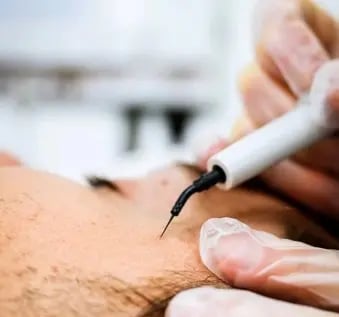
A qualified professional performs the Hyfrecator procedure. Topical anesthetic may be utilized to alleviate minor discomfort during the treatment. A ground pad may be used to ensure patient safety and comfort during the procedure.
The Hyfrecator treatment can be scheduled following an initial consultation with our healthcare provider. Typically, a single session lasts approximately 10-15 minutes, although for larger areas it may take 30-45 minutes.
Recovery and Aftercare

After undergoing Hyfrecator treatment, you should:
-
Avoid sun exposure for 1-2 weeks due to increased skin sensitivity and susceptibility to damage.
-
Use a physical sunscreen containing zinc or titanium during this period.
-
Recommended brands include EltaMD, JackieMD, and Colorescience.
Healing following Hyfrecator treatment generally takes about 4 weeks. It is normal to experience minor scabbing during the recovery period, which should naturally resolve within 10-14 days.
You may apply makeup after Hyfrecator treatment, but care should be taken when applying and removing makeup due to the delicacy of the treated areas. Patients are advised to allow the treated area to heal naturally and refrain from picking at any blisters or scabs that may develop.
Safety and Risks

Despite Hyfrecator treatments being generally considered safe, it's necessary to be aware of potential risks. These may include:
-
Burns (although the likelihood of experiencing burns is rare)
-
Soreness
-
Bruising
-
Bleeding
-
Infection However, it's important to note that these occurrences are also rare.
There is a concern for potential long-term health risks associated with the surgical smoke created during the treatment. This is particularly important to consider for operating room personnel.
If you encounter atypical or concerning symptoms after your treatment, it is encouraged to promptly contact the office for assistance.
Cost and Affordability
Although the cost of Hyfrecator treatment can vary, it is generally more economical compared to alternative methods such as laser therapy or surgical excision. For a precise cost assessment, it is advisable to seek guidance from a healthcare professional or dermatologist.
In general, insurance does not cover the cost of Hyfrecator treatment. However, financing options for Hyfrecator treatment may include services such as CareCredit® and PatientFiTм
Summary
Whether you're dealing with skin tags, milia, or sebaceous gland disorders, the Hyfrecator can provide effective relief, enhancing your skin's appearance and boosting your confidence. Remember to consult with a qualified professional to determine if Hyfrecator treatment is the right choice for you.
Last Updated: Aug 8, 2025
Last Updated: Aug 8, 2025
FAQs
What is a hyfrecator used for?
Is hyfrecator an electrocautery?
What is the difference between hyfrecation and cautery?
How long does it take for a hyfrecator to heal?
What are the potential risks of Hyfrecator treatment?
Schedule My Meeting
Location*
Doctor*

-2.jpg?width=2000&height=2000&name=Copy%20of%20YouTube%20Thumbnail%20-%20Life-Changing%20Cosmetic%20Surgery!%20(Document)-2.jpg)

